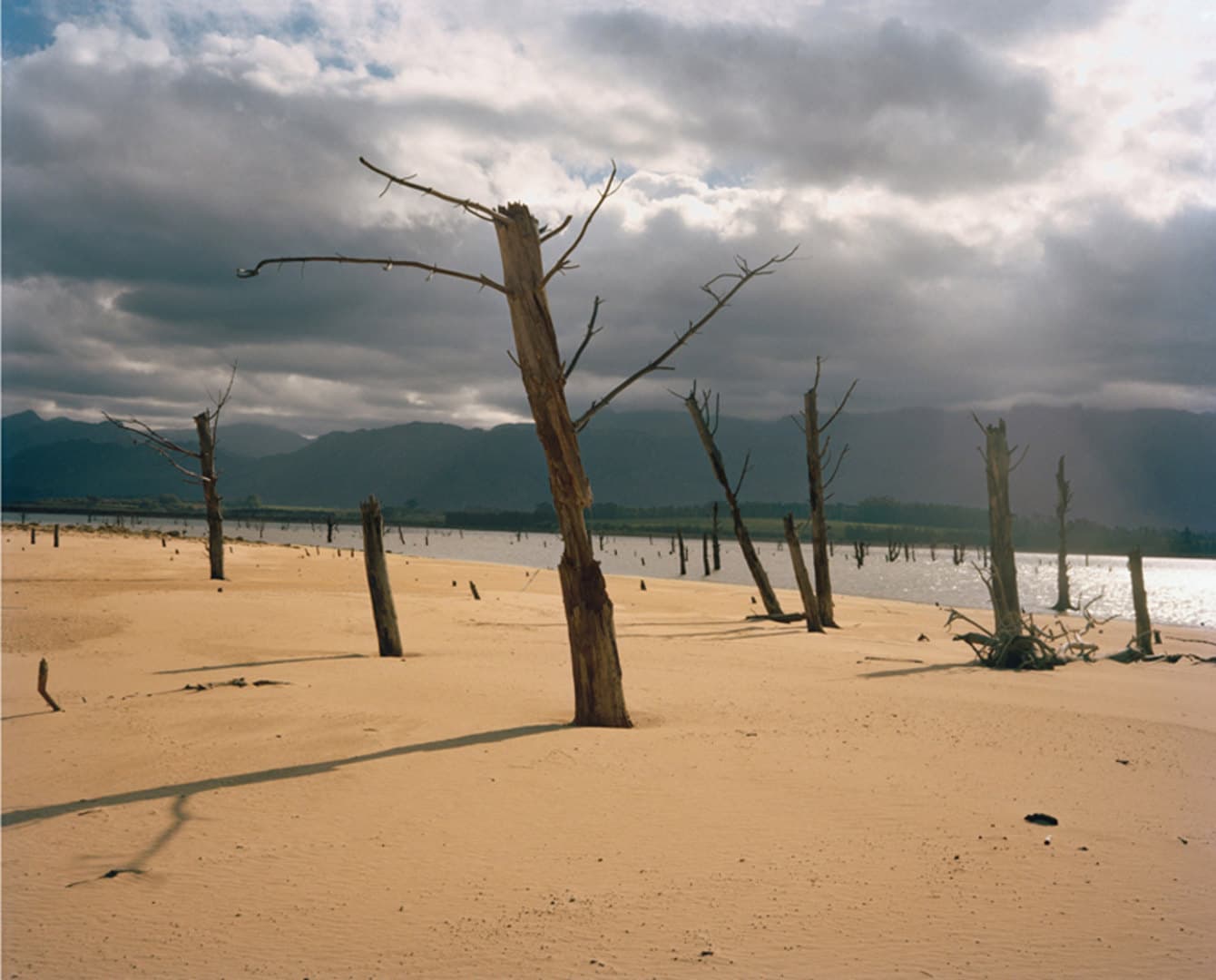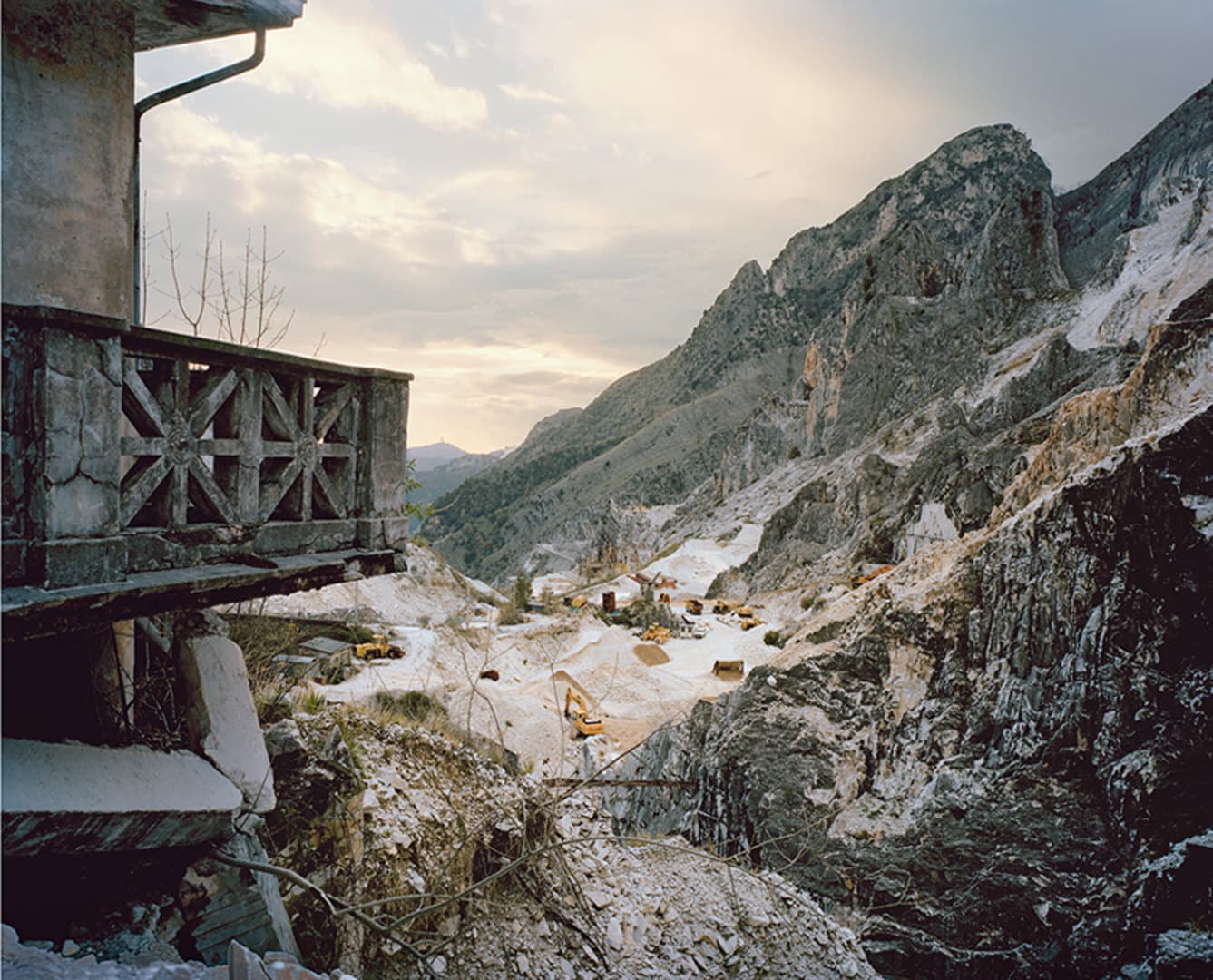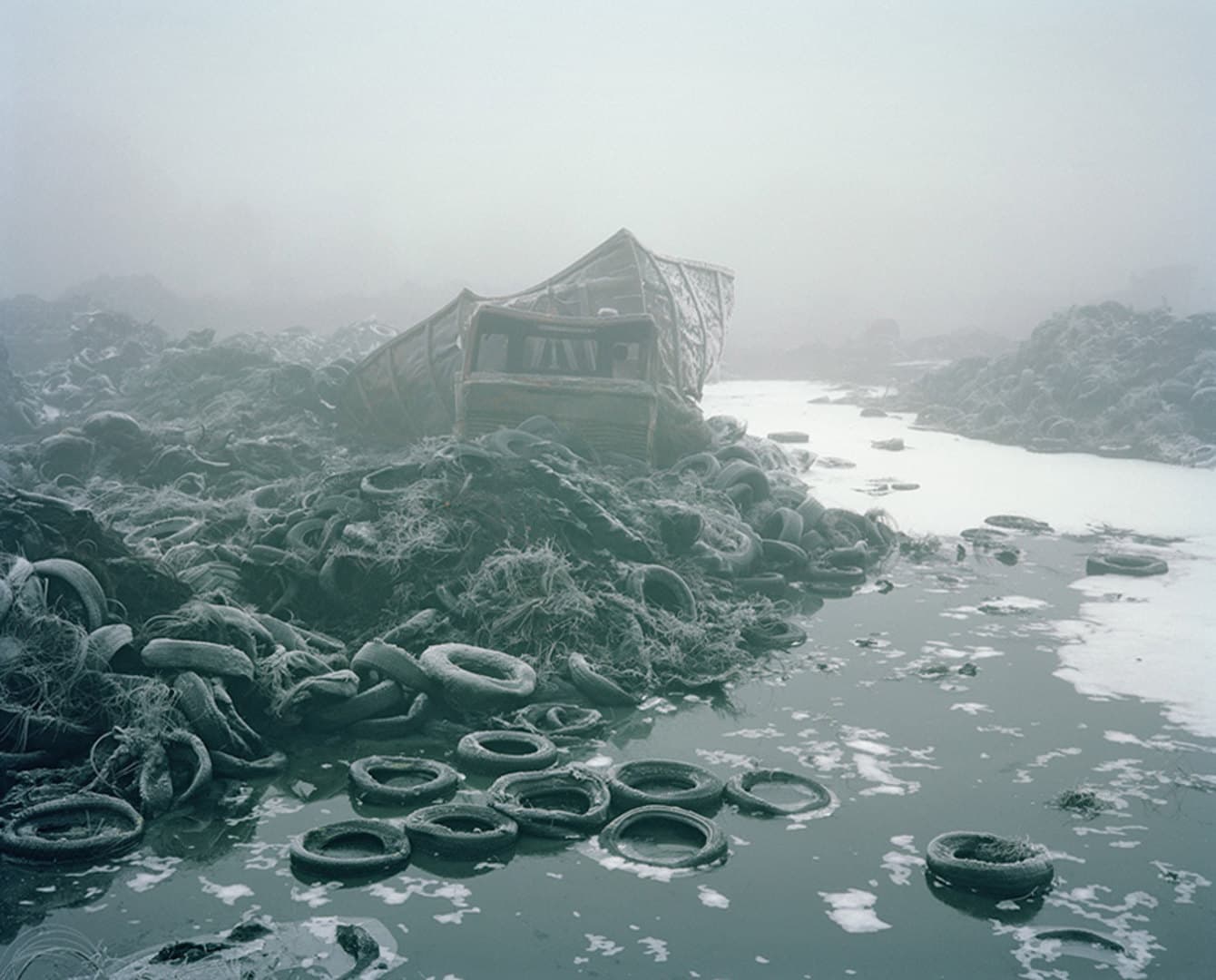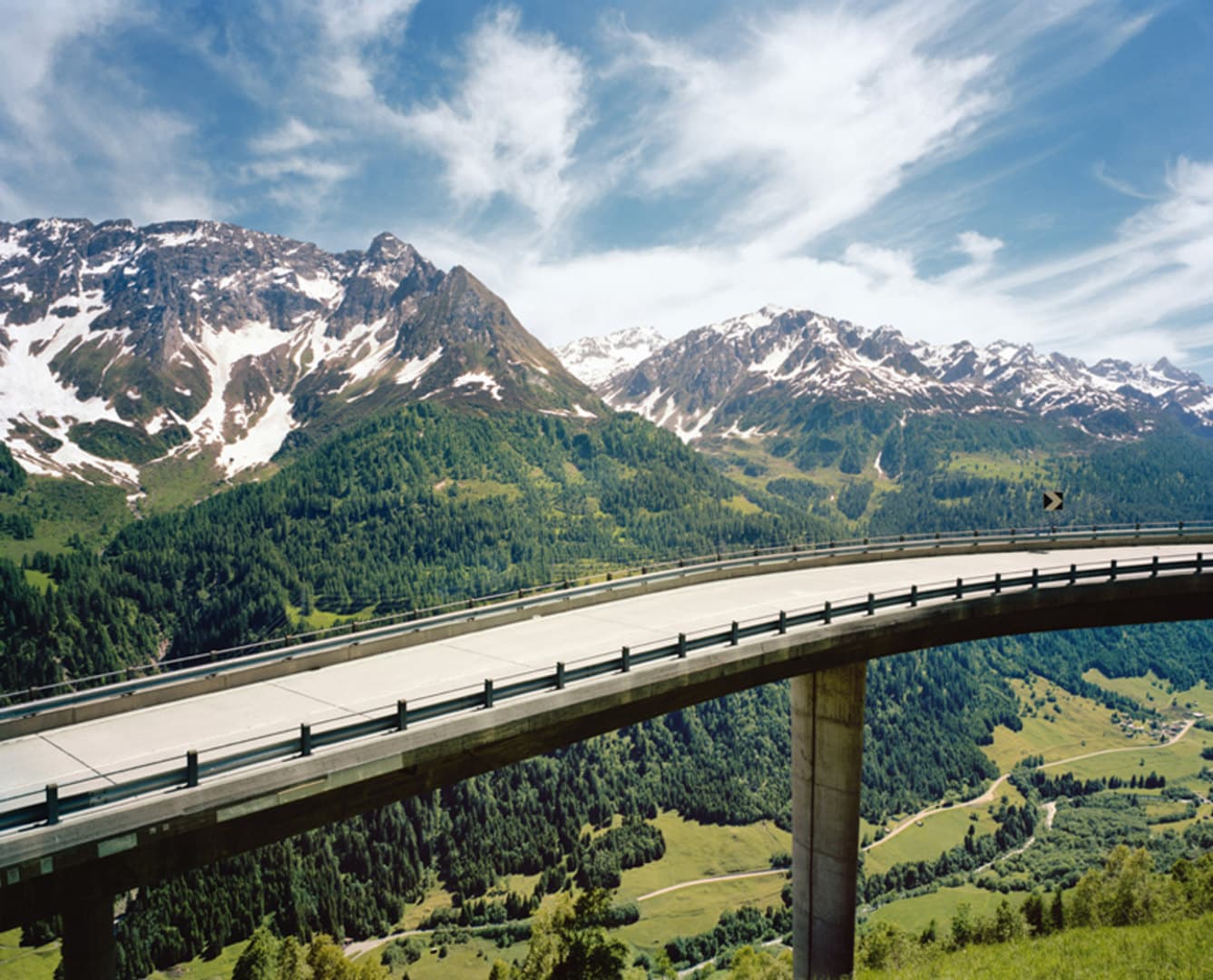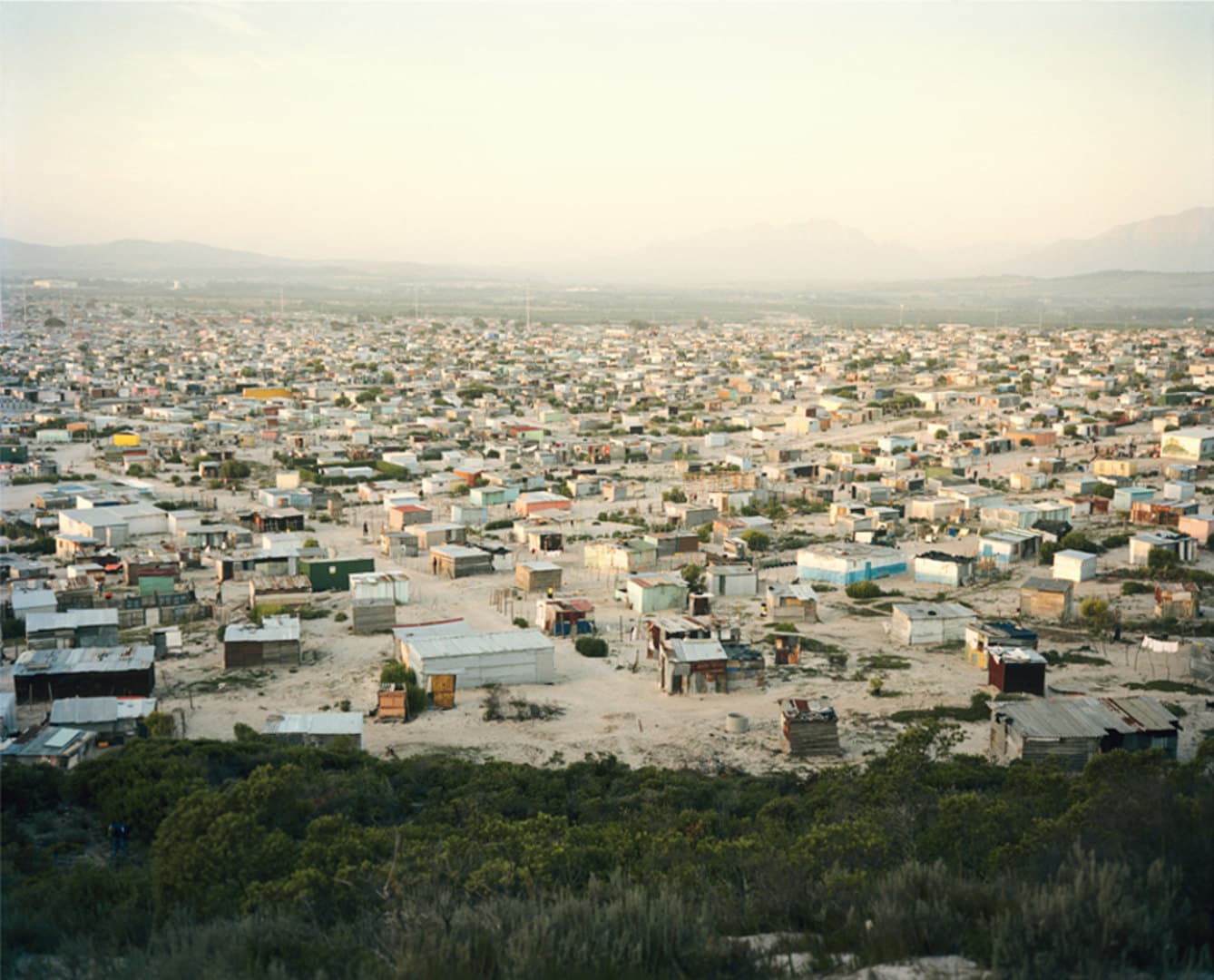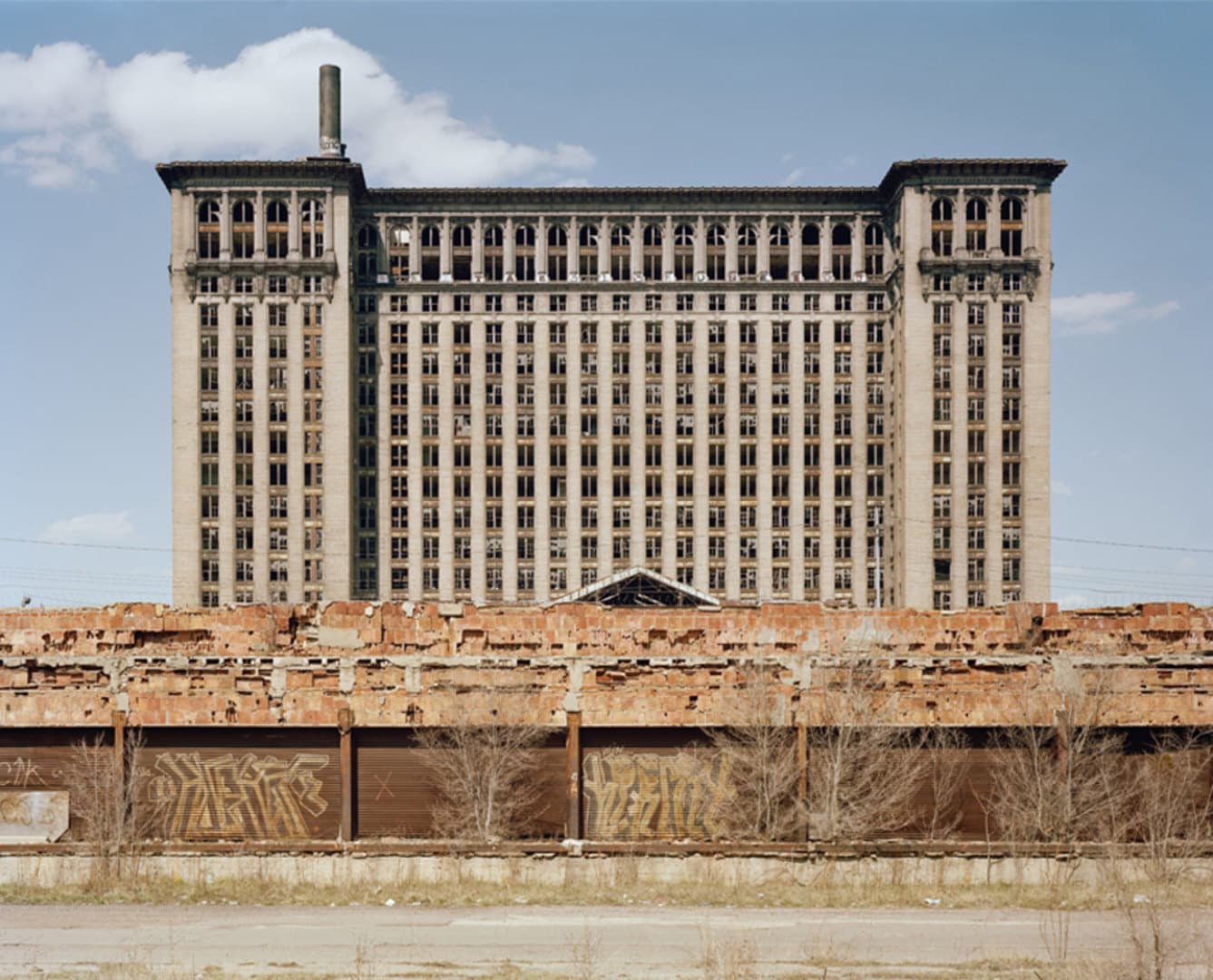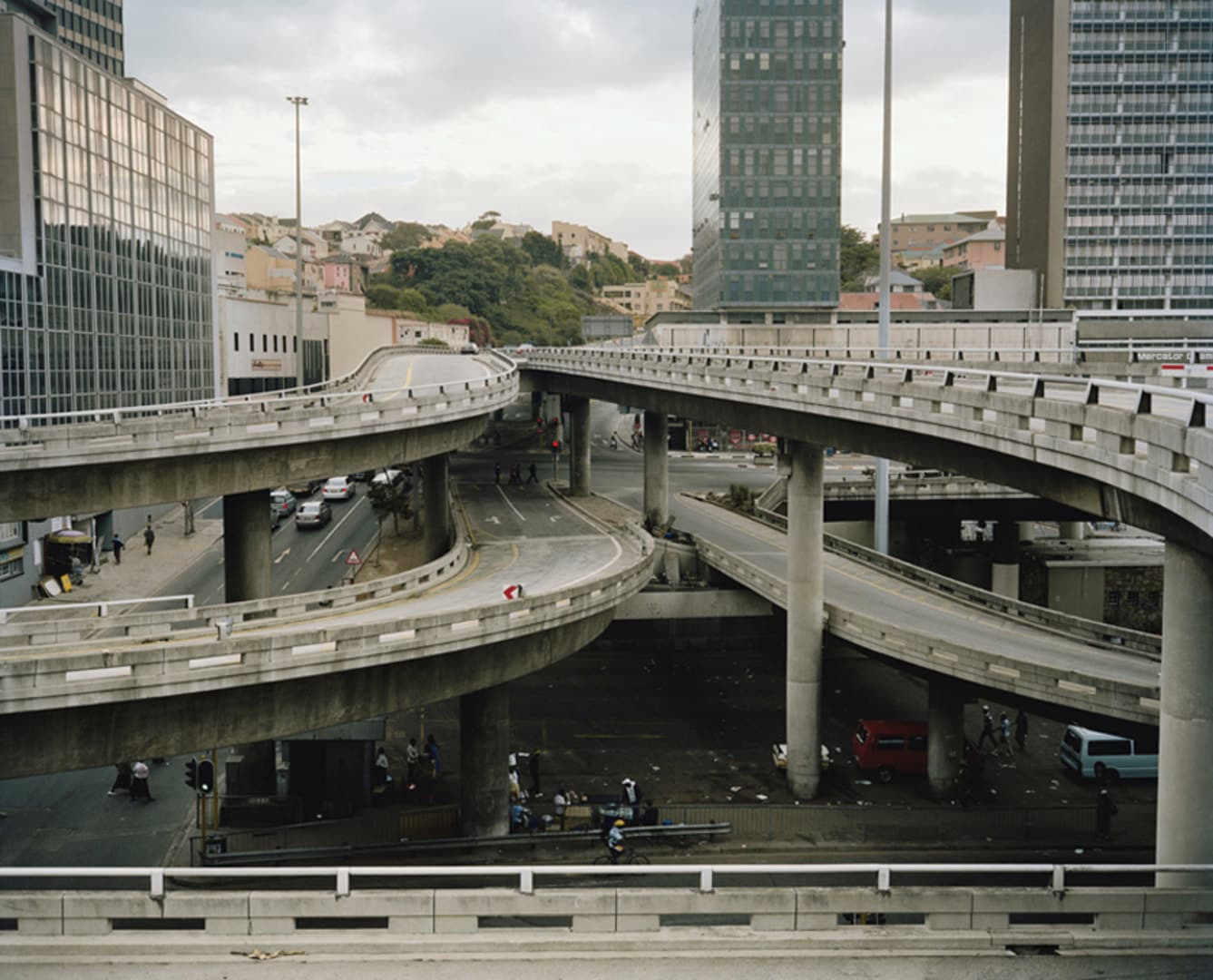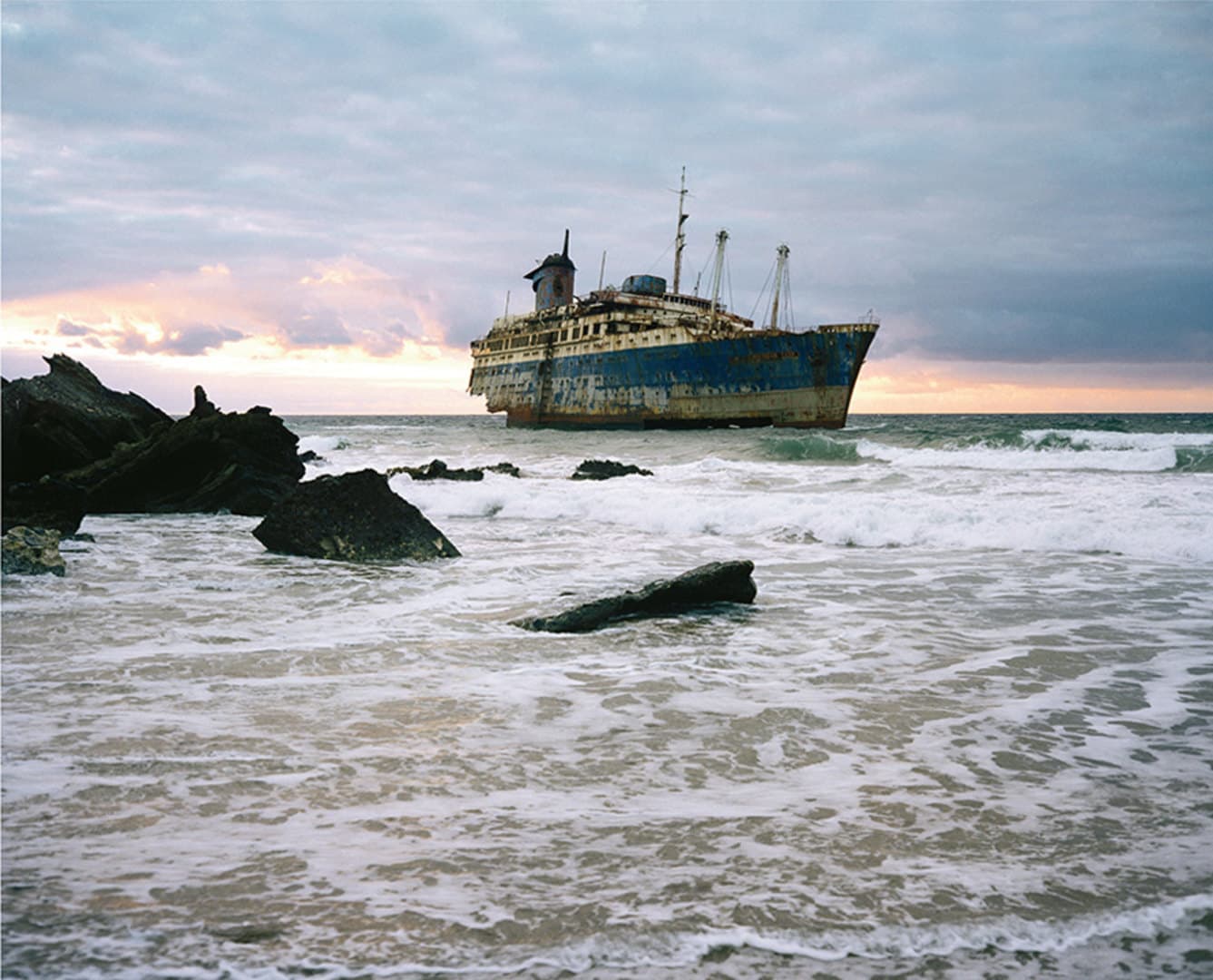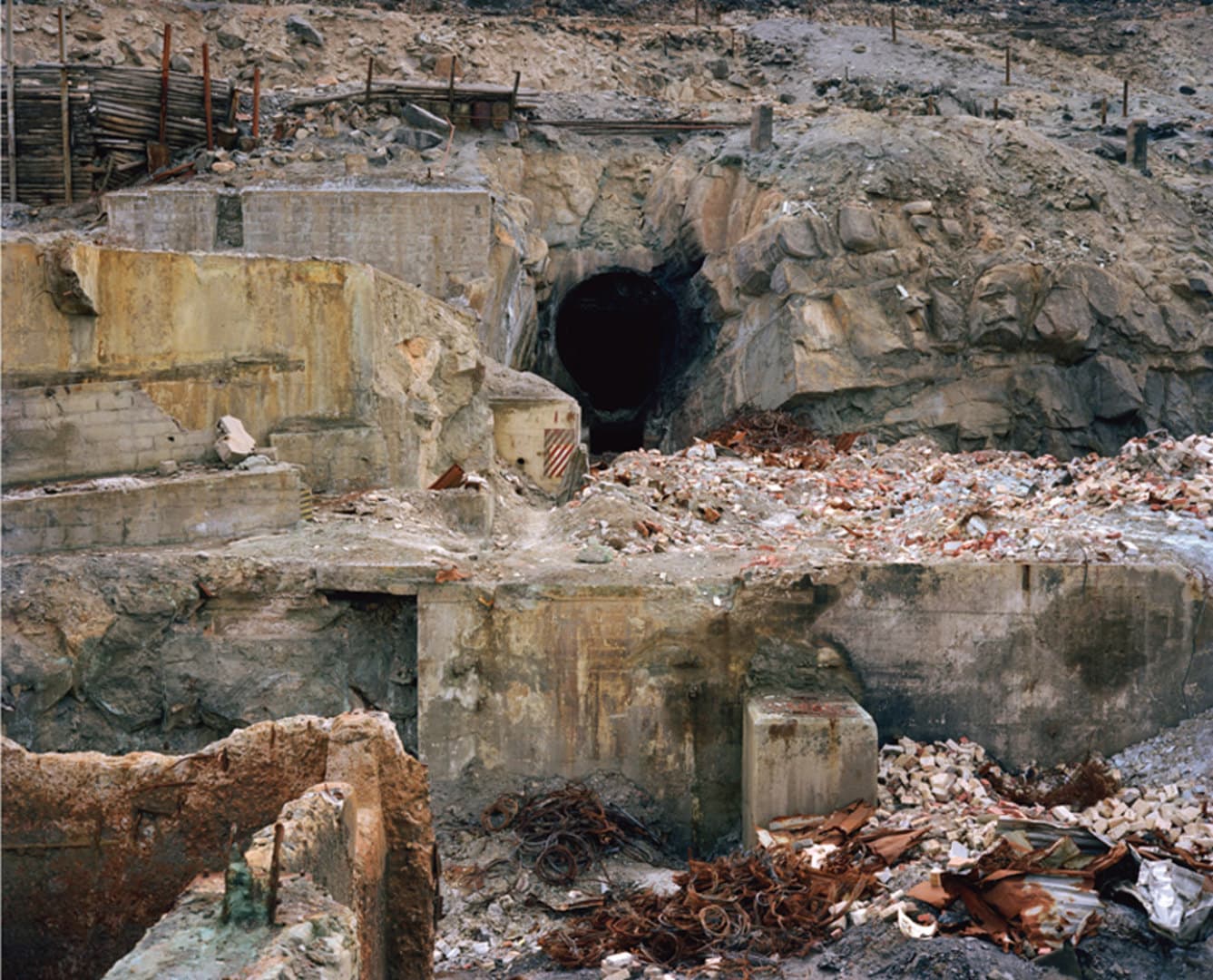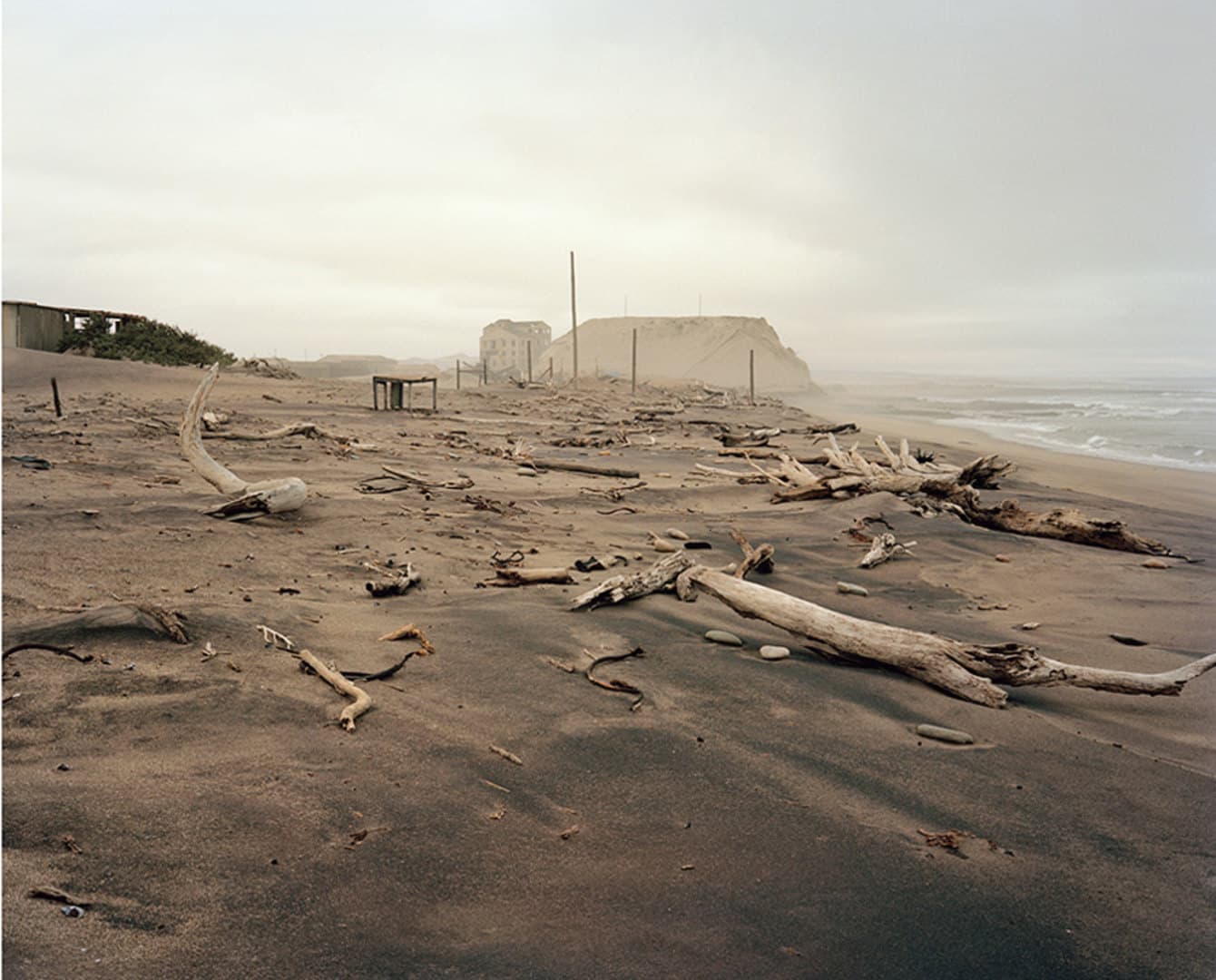Manmade landscapes of beauty and depredation
Only a few individuals appear in the quiet pictures by photographer Jörn Vanhöfen, or so it seems, at first glance. For behind the aesthetic charm of his visual compositions lies the ambiguity of their aesthetic, as well as the omnipresence of people in the age of globalization. His landscapes are places man has affected, and then carelessly abandoned, forgotten, but they also depict places of transformation, such as the wildfires in Portugal, droughts, or marble mining in Carrera. With his leftovers, man has created landscapes that ravage, pollute, and supplant: mountains of junk, paper, and old tires; industrial ruins and deserted terrain in mega-metropolises. Vanhöfen creates unique, poetic photographs, which disturb us and question our experience of reality, because they avoid definition. And so his photographs shock us, while confronting “the modern, sentimental feeling about nature,” of which philosopher Georg Lukás has already said that it is “only the projection of experience and the self-made environment is no longer a home for mankind, but a prison.” Nature is no longer comforting, but the “historical, philosophical objectification of the alienation between mankind and his constructs.” Of course, nowadays, it is almost trivial to point out that images are ambiguous. Yet, because of the number of images and the visual distractions that surround us every day, dulling the precision of our visual experience, it seems necessary to once again call for conscious perception and attention. Mindfulness describes the quality of perception. Vanhöfen compels anyone observing his pictures not only to consume them, but to really read the images. He calls himself a “political landscape photographer,” whose minimalistic images achieve clarity, and whose landscapes “would like to portray the confrontation with cultural idiosyncrasies,” as he said in an interview. Vanhöfen travels everywhere where the consequences of permanent growth and boundless profiteering have, in the meanwhile, become conspicuous: Africa, Europe, Asia, and North America, where beauty and horror are closely linked, but lack any trace of the sublime. Vanhöfen studied at the Folkwang School in Essen and works with a large-format camera and a 6-x-7 Plaubel Makina. “Even my choice of camera, and its slow speed, force me to stay at a distance. So I have spend much more time observing the situation and be more than usually conscious in my selection of a standpoint. My camera’s standpoint is always my internal standpoint—and programmed for distance and complexity.”
Text: Caroline Schilling

